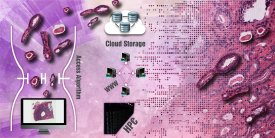Activity and Circadian Rhythm of Sepsis Patients in the Intensive Care Unit
Early mobilization of critically ill patients in the Intensive Care Unit (ICU) can prevent adverse outcomes such as delirium and post-discharge physical impairment. To date, no studies have characterized activity of sepsis patients in the ICU using granular actigraphy data. This study characterizes the activity of sepsis patients in the ICU to aid in future mobility interventions. We have compared the actigraphy features of 24 patients in four groups: Chronic Critical Illness (CCI) sepsis patients in the ICU, Rapid Recovery (RR) sepsis patients in the ICU, non-sepsis ICU patients (control-ICU), and healthy subjects. We used a total of 15 statistical and circadian rhythm features extracted from the patients’ actigraphy data collected over a five-day period. Our results show that the four groups are significantly different in terms of activity features. In addition, we observed that the CCI and control-ICU patients show less regularity in their circadian rhythm compared to the RR patients. These results show the potential of using actigraphy data for guiding mobilization practices, classifying sepsis recovery subtype, as well as for tracking patients’ recovery.


Leave a Reply
You must be logged in to post a comment.